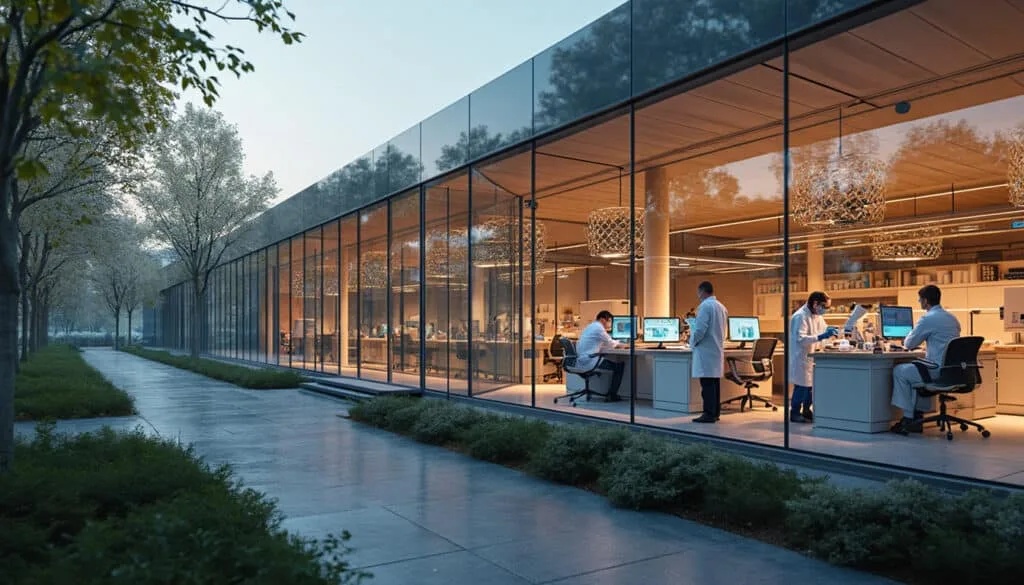Your activity on our site appears automated. For an optimal experience, please disable any anonymous proxy. Thank you for your understanding.
If the problem persists, contact our customer service mentioning incident number 45d91808-cy3y-4685-9882-96549d7d3453. Meanwhile, you can continue browsing by selecting the box “I am human.” These actions ensure the security and smoothness of your user experience. Our team is dedicated to quickly resolving any issues encountered. We appreciate your cooperation in maintaining a secure and efficient online environment.
Table des matières
ToggleWhat is noise in the workplace?
In France, one in five employees is faced with excessive noise exposure in their workplace. But what exactly is noise at work? Noise in a professional environment is defined as any undesirable sound coming from mechanical, electrical, or human sources, capable of disrupting the working environment. This noise pollution can come from industrial machines, construction sites, open offices, or ventilation systems.
Noise in the workplace is not just a temporary discomfort. It represents a significant public health issue, leading to both physical and psychological consequences for employees. Managing noise is all the more crucial in sectors like industry 4.0, where advanced technologies and cyber-physical systems sometimes increase the noise levels in working environments.
To better understand the extent of this problem, it is essential to refer to recent studies showing a direct correlation between excessive noise and absenteeism, decreased productivity, as well as employee demotivation. Moreover, in a context where digitalization and automation are redefining industrial processes, managing noise becomes a key component of the digital transformation of companies.
What are the main causes of noise exposure in companies?
Noise exposure in professional settings can be attributed to various sources. In the industrial sector, heavy machinery, air compressors, and conveyor systems are often the main culprits of high noise levels. These pieces of equipment, while essential for production, generate vibrations and constant noise that sometimes exceed the tolerable limits set by legislation.
In office environments, the increase in open spaces promotes the spread of noise. Telephone conversations, computer equipment, and even ambient noise generated by daily activities can contribute to significant sound exposure. Additionally, in the construction sector, site work exposes workers to particularly high noise levels, often exceeding safety thresholds.
Modern workplaces are increasingly adopting advanced technologies to improve efficiency and productivity. For example, predictive maintenance systems, as presented in this article, allow for better equipment management, but may also generate additional noise. Similarly, the integration of cloud and cyber-physical technologies in industrial processes, as described in this article, can increase noise exposure if appropriate measures are not implemented.
What are the effects of noise on employee health?
Prolonged exposure to high noise levels has multiple repercussions on workers’ health. Audible effects include hearing loss, tinnitus (ringing or buzzing in the ears), and balance disorders. Beyond physical impacts, noise can also cause stress, anxiety, and sleep disorders, thus affecting employees’ quality of life.
The stress induced by noise can lead to increased blood pressure, cardiovascular disorders, and decreased concentration ability. These consequences can result in lower productivity and increased errors at work, impacting the overall performance of the company.
Psychologically, continuous exposure to noise can reduce job satisfaction and increase staff turnover rates. Employees may experience sensory overload, affecting their overall well-being and professional engagement. It is therefore crucial for companies to implement noise management policies to preserve the health and well-being of their employees.
What are the French regulations regarding noise at work?
In France, the regulation on noise at work is governed by strict standards aimed at protecting workers. The Labor Code requires employers to ensure the safety and health of employees by evaluating risks related to noise and implementing appropriate preventive measures.
According to INRS (National Institute for Research and Safety), the average weighted sound exposure level A (L_EQ,8h) must not exceed 80 decibels (dB) for an 8-hour workday. If this level is reached or exceeded, the employer must take preventive measures, such as reducing the noise level at the source, providing acoustic insulation for workstations, or supplying appropriate hearing protection.
Furthermore, French legislation also imposes an obligation to inform and train employees regarding the risks associated with noise and the available protective measures. Regular checks and sound audits are also required to ensure companies comply with current standards.
In addition to national regulations, certain industries may be subject to specific noise standards, thus reinforcing employers’ obligations in terms of prevention and protection of workers.
How to reduce noise exposure in companies?
Reducing noise exposure within companies requires a multifaceted approach, combining technical, organizational, and behavioral measures. First, it is essential to identify the sources of noise and implement strategies to mitigate them. This may include regular maintenance of equipment, installation of acoustic barriers, or using absorbent materials in workspaces.
Reorganizing workspaces is also an effective solution. For instance, creating quiet zones where employees can rest or focus without auditory interruption helps reduce noise-related stress. Similarly, using advanced technologies, such as the predictive maintenance systems discussed in this article, can help prevent equipment failures before they generate excessive noise.
Involving employees in noise reduction initiatives is also crucial. Raising staff awareness of noise risks and training them on using hearing protection contributes to better management of their exposure. Additionally, encouraging respectful noise behavior, such as limiting loud phone conversations, can significantly decrease noise levels in office environments.
Finally, investing in innovative technologies, such as machine vision and collaborative robotics solutions presented in this article, can offer quieter alternatives to traditional processes, thereby contributing to a sustainable reduction of workplace noise.
Innovative technologies for noise management at work
Technological innovation plays a key role in managing noise in professional environments. Recent advancements in the fields of cyber-physics and cloud technologies allow the development of advanced solutions to monitor and control sound levels. For example, smart sensors can be deployed on industrial equipment to measure sound emissions in real-time, thus facilitating early detection of threshold exceedances.
Machine vision systems, combined with artificial intelligence, offer sophisticated analytical capabilities to identify and predict sources of noise. These technologies not only allow for quick reactions in case of exceeding sound levels but also enable proactive noise reduction strategies. To learn more about the impact of these technologies, refer to this article.
Moreover, collaborative robotics solutions can operate in noisy environments, thereby reducing the need for direct human interventions and consequently, exposure to noise. Using robots for repetitive or hazardous tasks helps decrease the noise burden on employees, contributing to a healthier work environment.
Furthermore, advanced communication technologies, such as active noise reduction systems, can be integrated into workspaces to absorb and neutralize unwanted noises. These systems utilize sophisticated algorithms to create opposing sound waves, thus canceling out surrounding noise and creating a more pleasant auditory environment.
Finally, adopting cloud platforms for sound data management allows for better analysis and continuous optimization of noise reduction strategies. By centralizing information and facilitating access to real-time data, companies can quickly adjust their preventive measures and ensure a work environment that adheres to acoustic standards.
The impact of Industry 4.0 on health and noise at work
The advent of Industry 4.0 has profoundly transformed work environments, introducing new technologies that have both optimized processes and altered sound dynamics on industrial sites. Cyber-physical systems, collaborative robots, and machine vision technologies have improved efficiency and productivity but have also introduced new sources of noise.
For example, the increased use of automated machines and robots can lead to higher noise levels, necessitating rigorous management to avoid excessive employee exposure. However, these technologies also offer opportunities to better control and reduce noise through integrated monitoring and sound regulation features.
Industry 4.0 also allows for a more integrated and proactive approach to noise management. With real-time data collected by smart sensors, companies can quickly identify problematic areas and intervene in a targeted manner. This ability to anticipate and respond to noise levels helps create safer and more pleasant work environments.
Moreover, integrating cloud technologies facilitates collaboration between different teams and departments, enabling better coordination of noise reduction efforts. For instance, collaborative platforms can be used to share acoustic data, plan interventions, and monitor the effectiveness of implemented measures.
In summary, while Industry 4.0 presents challenges regarding noise management, it also provides the necessary tools to overcome them. By combining technological innovation with effective prevention strategies, companies can not only improve their industrial performance but also preserve the health and well-being of their employees.
Case studies: companies that successfully managed noise at work
Several companies in France have implemented effective strategies to reduce their employees’ noise exposure, serving as inspiring examples for other organizations. One of these companies adopted a methodical approach by combining predictive maintenance and innovative technologies, which significantly reduced the noise levels of its industrial equipment. By following the recommendations from this article, the company managed to anticipate failures and minimize excessive noise generated by equipment malfunctions.
Another company in the construction sector invested in acoustic barriers and absorbent materials to decrease noise from construction sites. At the same time, it raised employee awareness about the importance of wearing appropriate hearing protection, thus reducing the risks of hearing loss and improving overall worker well-being.
In the open office sector, a company reorganized its workspaces by creating quiet zones dedicated to concentration and rest. By using active noise reduction systems, it succeeded in maintaining a work environment conducive to productivity while minimizing noise disturbances.
These case studies illustrate the importance of an integrated and proactive approach to managing noise at work. By combining advanced technologies, organizational strategies, and employee awareness, companies can create healthier and more productive work environments.
The fight against excessive noise exposure in professional environments is a major issue for the health of employees and the performance of companies. In France, where one in five employees is affected by this problem, it is essential to implement effective prevention and noise management measures. Thanks to technological advancements from Industry 4.0 and well-thought-out strategies, it is possible to create safer and more pleasant work environments while maintaining a high level of productivity and innovation.





